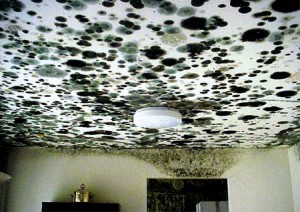Mold Removal
UV LIGHTS, OZONE GENERATORS, IONIZERS, AND MOLD TREATMENTS

In order to destroy mold with UV lights, you need to have the correct amount of exposure time required and the right intensity of UV light.
UV light intensity decreases rapidly the further you get from the bulb, so one thing you need to do when using UV is make sure the bulb gets close enough to the area being treated.
The amount of exposure time needed to kill mold varies for the different types of mold. Some molds are destroyed in seconds while others can take more than a couple of hours (or over 8,000 seconds).
Air traveling through a duct is moving at a minimum of 100 feet per minute. The chances of the mold spores in the duct being exposed to the light for a long enough time is slim. The better area to utilize this method is exposing the coils located in the HVAC system continuously to the UV lights. Having the coils cleaned once in a while will do the same.
Ionizers have been found to be not very effective at reducing mold counts. An air conditioning filter can give you better results at removing small particles from the air. HEPA air purifiers function 10 to 20 times more effectively.
Ozone generators are also used to reduce mold. Ozone is a highly reactive and toxic gas. Tests have shown that low levels of ozone won’t significantly reduce mold spores in the air. When adding ozone to the indoor air, you alter the chemical make-up of the air, causing it to have unexpected and potentially damaging results.
Ozone producing machines can increase the amount of small particles in the air as well as potential carcinogens such as formaldehyde. Never use ozone around people who have asthma, COPD, or other respiratory diseases.
Better methods to attack your mold include the following:
- Stop the source of the mold. Whatever has allowed moisture to infiltrate the area needs to be repaired. Moisture is the major culprit at creating the perfect environment for mold growth. If you seal the area, mold can’t grow there.
- Provide the area with good ventilation. Mold loves to grow in warm, moist places. Having some air flow (for instance in your attic space), can help with the issues.
- Clean the area with a solution of bleach and water. Mix one part bleach with ten parts of water and spray it with a chemical spray bottle. Use a chemical spray bottle because regular spray bottles are too easily corroded by the chemical bleach and will leak or break easily. Protect your skin from any bleach exposure, wear waterproof gloves and long sleeves.
- Use a HEPA air purifier. Stand alone and whole house HEPA systems offer effective reductions in mold counts. The spores of mold are very light weight and will stay in the air for quite some time. With the proper HEPA filter system, your purifier will reduce mold counts by around 90%.











